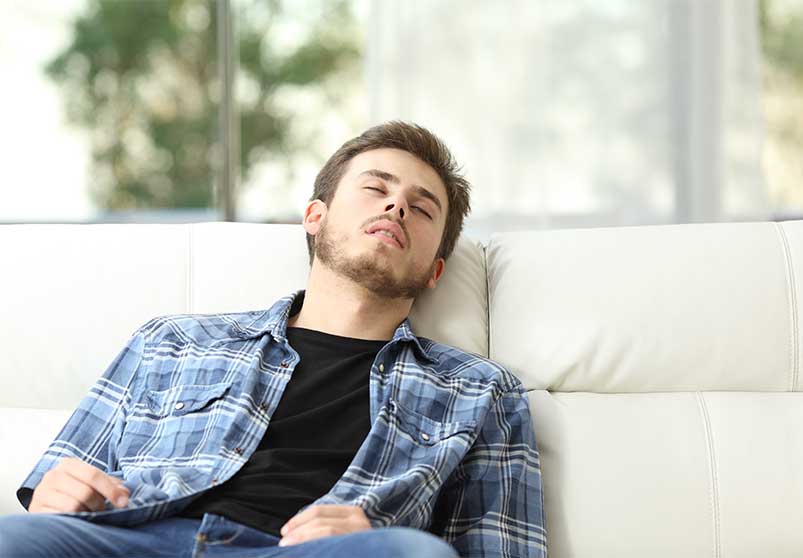What Do Opioids Feel Like?

Medically Reviewed By: Manish Mishra, MBBS
Opioid drugs provide sedative and euphoric sensations. Those taking opioids may also experience feelings of relaxation, a release of inhibitions, and calming effects.

If a person suffers from severe pain or chronic pain, they may be prescribed opioid medication. Some examples of opioid drugs (prescribed or illicit) include oxycodone (OxyContin), fentanyl, hydrocodone, codeine, and heroin.
Prescription opioids are Schedule II controlled substances, meaning they have habit-forming potential which may lead to psychological or physical dependence. Because of the effects of sedation and euphoria, some participate in opioid abuse to achieve a desired high.
When you abuse a medication meant for pain relief, side effects such as euphoria, sedation, limited inhibition, and others can be intensified.
How Do Opioids Make You Feel High?
Consuming this painkiller orally or abusing the drug via a different route of transmission can result in a high due to the medication attaching to opioid receptors in the brain and spinal cord.
Opioids inhibit the neurotransmitter gamma amino-butyric acid (GABA) in the brain, resulting in a release in dopamine which provides sensations of pleasure and sedation.
Side Effects Of Opioids
When opioid substance use takes place, a wide range of side effects may occur depending on the length of time and severity of drug use. Although prescribed for pain management, certain side effects may take place, including:
- released inhibitions
- sedation
- calming effects
- sleepiness
- drowsiness
- dizziness
- slow heart rate
- constipation
- general impairment
- lightheadedness
- blurred vision
Dangers Of Opioid Abuse
To experience the pleasurable feelings provided by opioid abuse, some may take the drug in large quantities or even snort or smoke the medication. Abusing a pain reliever can result in serious, life-threatening health problems.
Drug Interactions
Opioids depress the central nervous system (CNS), resulting in slower breathing and relaxation. Those who combine multiple opioids or other drugs which can cause drowsiness may experience severe health conditions such as slowed or difficulty breathing.
Illegal drugs, even stimulants such as cocaine, can create dangerous drug interactions. Additionally, benzodiazepines, alcohol, and certain antidepressants should be avoided.
Withdrawal Symptoms
It is not advised to stop taking an opioid “cold turkey.” Speak with your healthcare provider to assist you in quitting opioid use, including a process known as tapering, as serious opioid withdrawal can take place.
Some of the withdrawal symptoms associated with opioids, according to the National Institute on Drug Abuse (NIDA), include:
- tremors
- sleep problems
- muscle cramps
- mood swings
- sweating
- hallucinations
- cravings for the drug
- mental health problems such as anxiety
Opioid Overdose
As stated by the United States Food and Drug Administration (FDA), substance abuse of opioids may cause a person to consume higher doses of the drug. This can result in an overdose death.
Symptoms of an opioid overdose may consist of:
- confusion
- slowed reflexes
- seizures or convulsions
- loss of consciousness
- difficulty breathing such as respiratory depression
- death
If an opioid overdose is suspected, seek urgent medical attention and contact 911 immediately. Once at the hospital, emergency workers may provide medications to help reverse an opioid overdose such as naloxone.
Opioid Addiction Treatment
If a family member or another one of your loved ones struggle with drug use, consider Ohio Recovery Center. At our treatment center, we focus on your well-being, offering a variety of treatment options for you to consider.
We provide behavioral therapy, evidence-based practices, and medication-assisted treatment (MAT) with buprenorphine, methadone, or other medications for those suffering from an opioid use disorder.
To learn about how we design specialized treatment plans for every patient at our rehab center, please contact us today.
- Food and Drug Administration https://www.accessdata.fda.gov/drugsatfda_docs/label/2015/022272s027lbl.pdf
- National Institute on Drug Abuse https://nida.nih.gov/publications/drugfacts/prescription-opioids
- National Library of Medicine: MedlinePlus https://medlineplus.gov/ency/article/000949.htm
- National Library of Medicine: MedlinePlus https://medlineplus.gov/opioidsandopioidusedisorderoud.html

